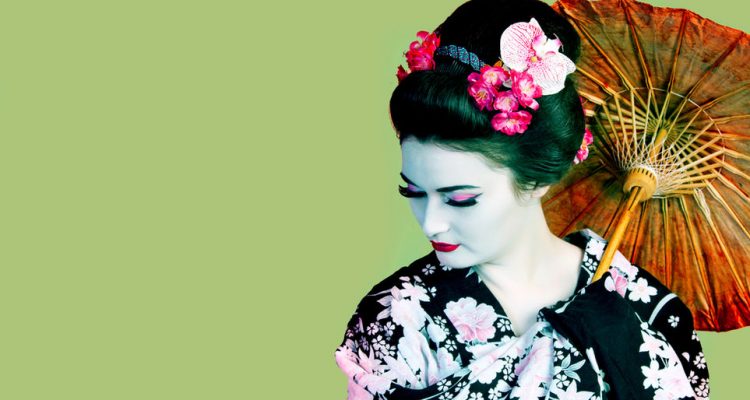Japan travel packages
The first records of geishas as they are known today date from the year 1700, so it could be said that it is a “recent” fact compared to the history of Japan on this subject. With this I do not mean that the type of practices carried out by these women has not been done since earlier times.
At the end of the 7th century there were saburuko and in the 12th century there were shirabyashi. Next, I will explain a little more about them and know a little about their history when you have your travel package to Japan:
Saburuko
It could be translated as “those who serve”, they were generally women without a stable home, who subsisted by selling sexual favors. In general they were of extremely low class, although some were talented and well educated, and they used to attend meetings of the upper classes with some frequency to liven up the evenings with their dances and songs.
Shirabyōshi
Whose name comes from the dance they performed, they arose at a time of great social changes, the Heian period, in which many noble families had economic problems and the only way to survive for the daughters of these families was to become shirabyōshi.
Being from a good family, they had an exquisite education and soon began to be highly valued for their gifts for poetry and dance. The songs and dances of these women also used to have an important erotic charge.
So, around the year 1586, the Emperor of Japan Hideyoshi Toyotomi granted a license to a subtido to organize the subject of brothels. Then, a small neighborhood surrounded by fences began to be built in the Nijō Yanagimachi area, in Kyoto, in the style of the pleasure districts of the Ming dynasty in China.
The Japonisimo.com portal points out that in 1641 this first pleasure district of Kyoto moved to the south of the city since it was too close to the Imperial Palace, and that is that despite the more permissive attitude of the Japanese towards sex, a It is one thing to be open-minded and quite another to mix the court with low passions.
It was then that it became known as the “Shimabara of Kyoto” (so called because its single entrance gate apparently resembled the Shimabara fortress on the island of Kyūshu).
The success of Shimabara led to the creation of other pleasure districts throughout the country, as the clever Japanese of the time realized that there was business there. Of all those that were created, one of the most famous and active was Yoshiwara, which was located in Edo, the name that the city we know today as Tokyo had at that time.
The story of a geisha
When you purchase your all-inclusive trip to Japan, you will discover that entering the world of the geisha is a ritual that is practiced for life until the moment she dies or retires from the profession. This is how Mineko Iwasaki tells it, the best Japanese geiko or geisha, who was also the anonymous protagonist of the best seller entitled “Memoirs of a Geisha” published in 1997.
The story of this woman begins when she leaves her home to study traditional Japanese dance in Iwasaki in Kyoto when she was only a year old. She was adopted by a family who chose her as heir to the house for when her adoptive mother was too old to run the family business.
Mineko at age became a maiko, meaning apprentice geisha, at age 21 she built a reputation as Japan’s best dancer and maiko and officially became a geisha at that time. In the process, he worked to the limit to the point that he contracted a kidney disease that nearly ended his life, thankfully he recovered and returned to his life in the geiko community.
Throughout his life, he managed to entertain various foreign dignitaries, as well as celebrities such as Queen Elizabeth II, Prince Charles of England, for example. His fame and success created great fans for him, as well as rumors and jealousy, as well as attacks and ill-intentioned fame.
Mineko unexpectedly retired when she was at the peak of her career, it is said that she ended up frustrated with the obligations of the traditional world of geiko, she also had the desire to create her own family. Fulfilling her family longing, she married an artist named Jinichiro Sato and had a daughter named Koko and now lives in a suburb of Kyoto.
The problem with Arthur Golden and “Memoirs of a Geisha”
Iwasaki felt betrayed by Golden’s use of information she considered confidential, as well as by the way he turned reality on its head, denouncing Memoirs… as an inaccurate distortion of a geiko’s life. Iwasaki was particularly offended by the novel’s portrayal of a geisha who entertains by engaging in a kind of ritualized prostitution.
For example, in the novel the virginity (called “mizuage” in the work) of Sayuri, the main character, is auctioned off to the highest bidder. Iwasaki stated that not only did this not happen to her, but there was no such clientele in Gion. Part of Iwasaki’s unease with Memories… may also have been caused by Sayuri’s character seeming obviously made in Iwasaki’s image.


